Alla Borisyuk
A Role of Environmental Complexity on Representation Learning in Deep Reinforcement Learning Agents
Jul 03, 2024
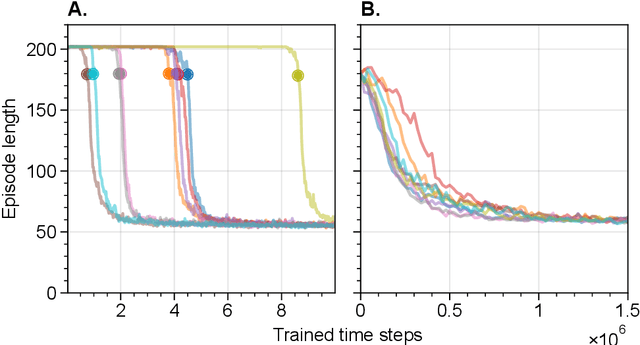
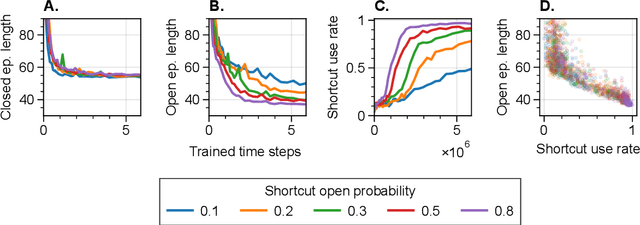
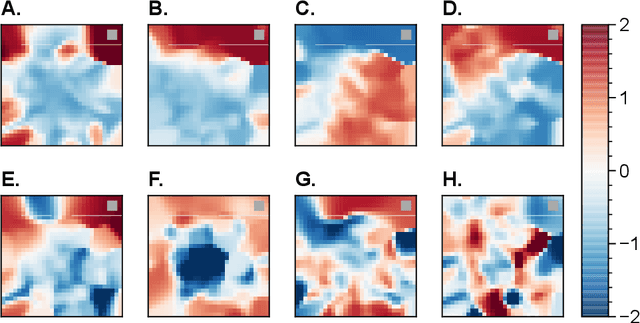
Abstract:The environments where individuals live can present diverse navigation challenges, resulting in varying navigation abilities and strategies. Inspired by differing urban layouts and the Dual Solutions Paradigm test used for human navigators, we developed a simulated navigation environment to train deep reinforcement learning agents in a shortcut usage task. We modulated the frequency of exposure to a shortcut and navigation cue, leading to the development of artificial agents with differing abilities. We examined the encoded representations in artificial neural networks driving these agents, revealing intricate dynamics in representation learning, and correlated them with shortcut use preferences. Furthermore, we demonstrated methods to analyze representations across a population of nodes, which proved effective in finding patterns in what would otherwise be noisy single-node data. These techniques may also have broader applications in studying neural activity. From our observations in representation learning dynamics, we propose insights for human navigation learning, emphasizing the importance of navigation challenges in developing strong landmark knowledge over repeated exposures to landmarks alone.
Investigating Navigation Strategies in the Morris Water Maze through Deep Reinforcement Learning
Jun 01, 2023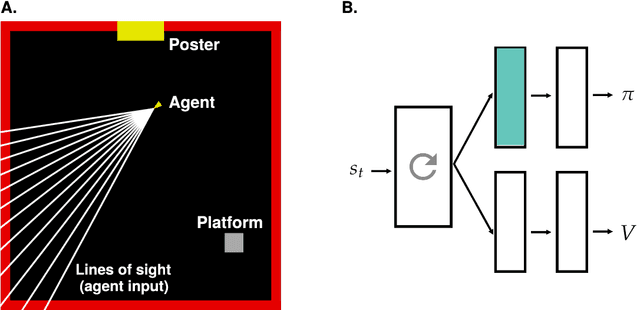
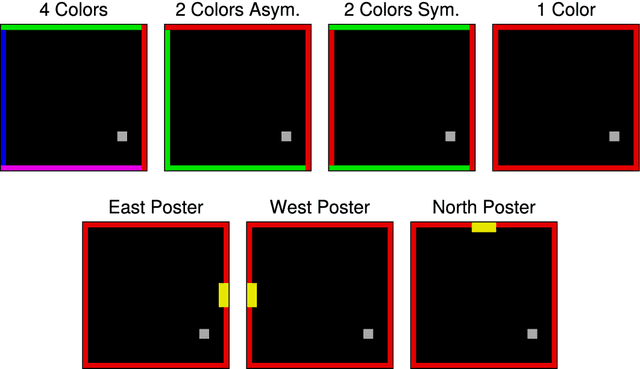

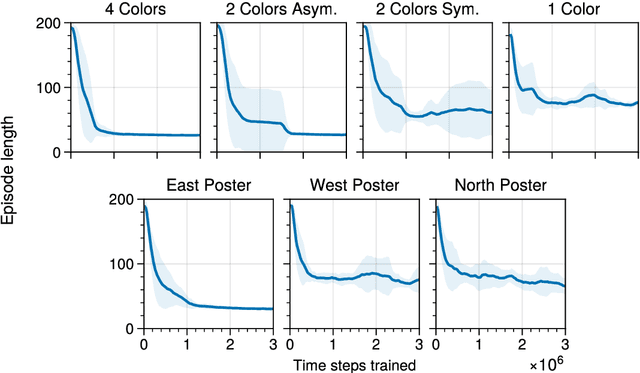
Abstract:Navigation is a complex skill with a long history of research in animals and humans. In this work, we simulate the Morris Water Maze in 2D to train deep reinforcement learning agents. We perform automatic classification of navigation strategies, analyze the distribution of strategies used by artificial agents, and compare them with experimental data to show similar learning dynamics as those seen in humans and rodents. We develop environment-specific auxiliary tasks and examine factors affecting their usefulness. We suggest that the most beneficial tasks are potentially more biologically feasible for real agents to use. Lastly, we explore the development of internal representations in the activations of artificial agent neural networks. These representations resemble place cells and head-direction cells found in mouse brains, and their presence has correlation to the navigation strategies that artificial agents employ.
 Add to Chrome
Add to Chrome Add to Firefox
Add to Firefox Add to Edge
Add to Edge